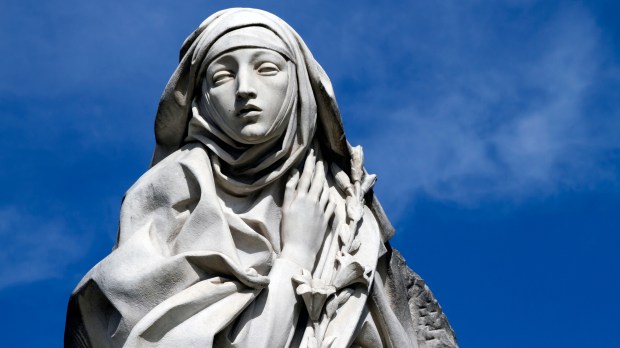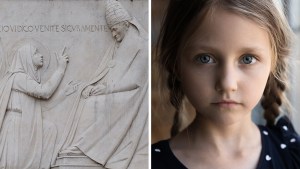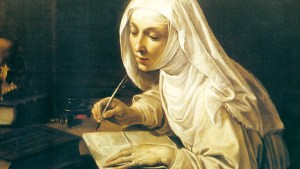St. Catherine of Siena was highly influential in Europe during the 14th century, and for her many contributions St. John Paul II named her a patron saint of Europe.
He did so on October 1, 1999, looking forward to the new millennium. In particular, St. John Paul II wanted to give Europe holy examples as the countries were leaving behind a very bloody century. He saw it most fitting to learn from Europe’s past to form Europe’s future.
The hope of building a more just world, a world more worthy of the human person, stirred by the expectation of the impending Third Millennium, must be coupled with an awareness that human efforts are of no avail if not accompanied by divine grace: “Unless the Lord builds the house, those who build it labor in vain” (Ps 127:1). This must also be a consideration for those who in these years are seeking to give Europe a new configuration which would help the Continent to learn from the richness of her history.
In particular, he chose St. Catherine of Siena as one of the new patron saints of Europe. He explained his choice, going through the many contributions she made and the strong faith she possessed.
She was quickly able to blend the silence of this cell, which rendered her completely docile to God’s inspirations, with remarkable apostolic activity. Many people, including members of the clergy, gathered around her and became her disciples, recognizing in her the gift of spiritual motherhood. Her letters circulated throughout Italy and Europe as a whole. Indeed, by the assurance of her bearing and the ardour of her words, the young woman of Siena entered into the thick of the ecclesiastical and social issues of her time.
St. Catherine of Siena worked to resolve conflicts between rulers of nations and even within Church.
Catherine was tireless in her commitment to resolving the many conflicts which afflicted the society of her time. Her efforts to bring peace reached the level of European rulers such as Charles V of France, Charles of Durazzo, Elizabeth of Hungary, Louis the Great of Hungary and Poland, and Giovanna of Naples. Her attempts to reconcile Florence with the pope were also notable. Placing “Christ crucified and sweet Mary” before the parties involved, she made it clear that in a society inspired by Christian values there could never be grounds for conflict so serious that the reasons of force need prevail over the force of reason.
St. Catherine of Siena led a remarkable life and her efforts helped shape Europe, leaving a strong spiritual legacy that all can learn from.



